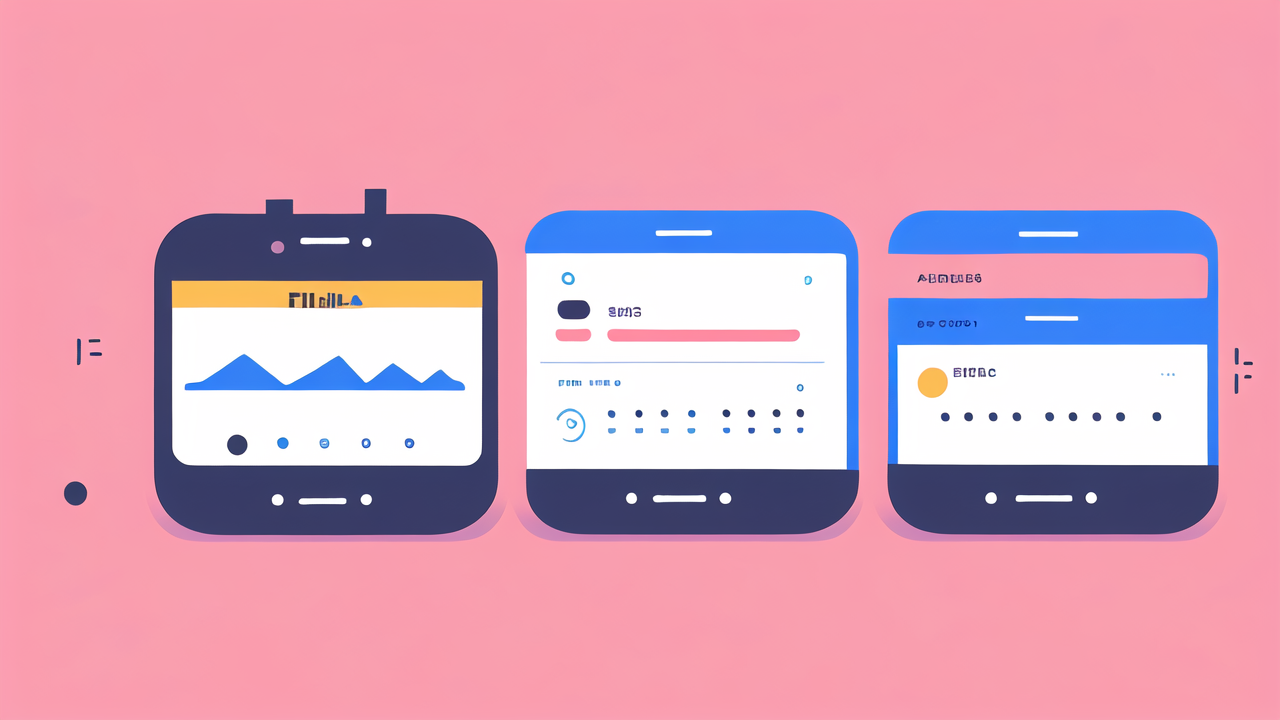Evolution of Digital Watches
From LED to LCD: The Technological Shifts
The digital watch landscape has undergone significant transformations since their inception. In the early days, time was displayed using light-emitting diode (LED) technology, which was iconic for its bright red numerals. However, LED displays often required a push of a button to read the time due to their constant-on nature draining batteries quickly. As technology progressed, liquid crystal displays (LCD) replaced LEDs. LCDs were more energy-efficient, allowing the time to be displayed continuously without depleting the battery rapidly. This change not only extended the longevity of digital watches but also made them more user-friendly, setting the stage for their integration into daily life. Today, when we look at a digital watch, we're most likely reading time on an LCD screen, a testament to the importance of these technological shifts in the evolution of personal timepieces.

Rise of the Smartwatch Era
The digital watch landscape dramatically transformed with the advent of the smartwatch era. Smartwatches, which synchronize with smartphones, have taken consumer functionality to new heights. Features such as receiving calls, text messaging, and app integration are commonplace. Brands like Apple, Samsung, and Fitbit dove into the market, offering gadgets that not only tell time but also serve as fitness trackers, mobile payment devices, and portable media players. This era marked a significant turning point for digital wristwear, as the focus shifted from mere timekeeping to comprehensive personal assistants on the go. Their popularity has been soaring, indicating a wide acceptance among tech-savvy consumers and those seeking convenience in their bustling lifestyles. As their capabilities continue to expand, smartwatches are poised to cement their status as essential tools for the modern individual.
Key Features of Modern Digital Watches
Advanced Health and Fitness Tracking
Modern digital watches have transformed the way we monitor our health and fitness. These timepieces now come equipped with sophisticated sensors that track heart rate, blood pressure, and even oxygen levels. They also include fitness tracking capabilities, enabling users to keep tabs on their steps, distance traveled, and calories burned throughout the day. With sleep monitoring features, these watches assist users in analyzing their sleep patterns to improve sleep quality. Most remarkably, they can connect to various health apps to set fitness goals and monitor progress, making it easier for individuals to maintain a healthy lifestyle. Reliable and convenient, modern digital watches offer comprehensive health and fitness management right from your wrist.
Seamless Connectivity Options
Modern digital watches stand out for their ability to effortlessly connect with other devices. They offer Bluetooth or Wi-Fi connectivity, allowing users to sync with smartphones, tablets, or laptops. This ensures instant notifications for calls, texts, or app alerts directly on the wrist. GPS integration is common, providing location tracking and navigation support. Some watches also feature NFC (Near Field Communication) for contactless payments. Easy access to digital assistants like Siri or Google Assistant through voice commands has also become a popular feature. A user's digital ecosystem is truly at their fingertips, all thanks to the robust connectivity options available in today's digital watches.
Impact on Traditional Watchmaking
Challenges and Adaptations in the Industry
The advent of digital watches has brought significant challenges to traditional watchmaking. However, it also provides opportunities for adaptation and innovation. The industry faces the task of merging classical craftsmanship with modern technology. This includes creating hybrid models that retain mechanical features while incorporating digital elements like touchscreens or connectivity. Craftsmen must also acquire new skills to work with advanced materials and electronics. Furthermore, watchmakers are exploring partnerships with tech companies to stay relevant. For instance, some have added features like activity tracking to their timepieces. These changes reflect a determination not only to survive but to evolve within a market that increasingly values the convergence of tradition and technological advancement.
Consumer Preferences and Market Trends
Demographic Shifts in Digital Watch Ownership
As the digital watch industry evolves, consumer ownership demographics have shifted significantly. Modern features like GPS, heart rate monitors, and app integration have attracted a younger, tech-savvy audience. Brands are now targeting this demographic with marketing strategies tailored to their lifestyle. Statistics show an increased interest in digital watches among fitness enthusiasts and professionals who value convenience and functionality. On the other hand, luxury digital watches also see a rise in popularity among affluent customers who appreciate the fusion of high-end design with cutting-edge technology. This trend is reshaping how companies approach product development and marketing to meet the diverse needs of these demographic groups. Understanding these shifts is crucial for businesses looking to capitalize on the expanding digital watch market.
Trends in Aesthetics and Functionality
As digital watches evolve, consumer preferences also shift, prominently featuring an emphasis on both aesthetics and functionality. Sleek designs are now paired with robust features, pushing the envelope of what a digital watch can do. People today prefer gadgets that look good on the wrist while offering a multitude of applications. For instance, watches that seamlessly blend with formal attire or sporty looks are in high demand. Functionality-wise, consumers seek not only time-telling but also health tracking, mobile notifications, and even contactless payments. This trend has led to the development of customizable interfaces, where one can change the watch face according to the occasion, and water-resistant bodies that cater to the sporty and adventurous. Through these changes in appearance and capabilities, digital watches are experiencing surges in popularity across various demographic groups, catering to a wider audience with diverse tastes and needs.
The Role of Innovation in Market Expansion
Integrating Fashion and Technology
The intersection of fashion and technology is crucial to the digital watch market expansion. Innovative designs that combine the traditional elegance of watches with modern tech elements are capturing consumer interest. These pieces are not just timekeepers but also fashion statements, with features like customizable faces and bands. Moreover, technological integration has made it possible to incorporate materials that appeal to fashion-forward individuals while maintaining functionality. Companies are tapping into this hybrid market, creating watches that serve multiple purposes and fit into various lifestyle aspects. As wearable technology becomes more prevalent, the fusion of fashion and tech is likely to become a significant trend, offering consumers the best of both worlds.
The Importance of Wearable Tech in Everyday Life
In today's fast-paced world, wearable tech, including digital watches, has become a daily necessity. These devices offer far more than just timekeeping; they are an integral part of our lives. They help manage schedules with reminders, track health with built-in sensors, and allow instant communication through calls and messages. The convenience of having a mini-computer on your wrist cannot be overstated. As technology advances, people rely on these smart devices to stay organized, motivated in fitness goals, and connected to the world. This reliance is a driving force in market expansion, as users demand more features, leading to continuous innovation. In short, the importance of wearable tech lies in how effortlessly it fits into everyday life, enhancing our day-to-day tasks and providing access to a world of information with just a flick of the wrist.
Comparing Smartwatches and Digital Watches
Differences in Features and Usability
When comparing smartwatches and digital watches, the features and usability vary greatly. Digital watches, known for their simplicity, display the time digitally, and may include basic functions like a stopwatch, alarm, and backlight. They are user-friendly and durable, designed for everyday use. Smartwatches, on the other hand, act as an extension of a smartphone, offering notifications, messages, calls, and app functionality right on your wrist. They usually come with touchscreens, allowing for more complex interactions and navigation. Smartwatches often include advanced health and fitness tracking, GPS, and the ability to install additional apps, making them more versatile but also more complex to use. The choice between the two depends on individual needs and tech-savviness, with digital watches appealing to those who prefer straightforward functionality and smartwatches catering to those who value connectivity and advanced features.
Price Points and Consumer Decisions
Smartwatches and traditional digital watches cater to diverse preferences and budgets. While smartwatches often come with a higher price tag due to their advanced features, such as GPS, apps, and the ability to sync with other devices, their multifunctionality justifies the cost for tech-savvy consumers. On the other hand, simple digital watches are more affordable and suffice for individuals who primarily need a reliable timepiece with basic features like alarms and stopwatches. Price comparisons play a significant role in consumer decisions, as individuals weigh the benefits of a smartwatch against their budget and the functionality they desire from their wristwear. Marketers in the watch industry must understand these consumer patterns to effectively position their products, ensuring that options are available for every segment, from budget-conscious buyers to luxury enthusiasts seeking the latest in wearable technology.
The Future of Digital Watches
Predictions for Technology and Design
As we look forward, technology and design are set to play pivotal roles in the evolution of digital watches. Experts predict that we'll see an emphasis on personalization, with consumers being able to customize the look and functions of their watches to match their style and needs. Modular designs that allow for upgrades and feature enhancements without having to purchase a whole new watch are expected to become more popular. Additionally, we'll likely see advancements in battery life, screen technology such as bendable or foldable displays, and the integration of augmented reality features. Design aesthetics may lean towards a blend of traditional craftsmanship with cutting-edge tech, offering the best of both worlds to consumers. These innovations will not only elevate the user experience but also strengthen the watchmaking industry's position in the mainstream market.
Potential Developments in User Experience
As we look toward the future, digital watches are expected to become even more intuitive and personalized. We may see developments such as gesture controls, biometric authentication for increased security, and adaptive screens that adjust to environmental conditions, improving readability. AI integration could lead to watches that not only track health metrics but also provide health advice based on user behaviour. Additionally, the growth of augmented reality (AR) may pave the way for digital watches to display information in wholly new and interactive ways, adding a layer of virtual engagement to our daily experiences with wearable technology.
Sustainability and Ethical Considerations
Eco-friendly Materials and Production
As the digital watch industry evolves, sustainability has become a key focus. Manufacturers are now investing in eco-friendly materials to reduce environmental impact. These materials include recycled plastics, renewable energy-powered production processes, and biodegradable packaging. The use of these sustainable resources helps to curb waste and lower carbon footprints. Additionally, producing digital watches in energy-efficient factories further enhances eco-sustainability. Companies are striving to balance innovation with ecological responsibility, showing that cutting-edge technology can go hand-in-hand with protecting our planet.
The Push for Ethical Sourcing and Labor Practice
The digital watch industry is focusing more on ethical sourcing and labor practices to meet the growing consumer demand for sustainable products. Companies are now pushing for transparency in their supply chains, ensuring that the materials used are sourced responsibly and that workers involved in production are treated fairly and provided with safe working conditions. They are also aiming to minimize their environmental footprint through the use of eco-friendly materials and by reducing waste throughout the manufacturing process. This shift towards ethical practices is not only benefiting the environment and workers but also resonating with consumers who are increasingly making purchasing decisions based on sustainability and ethics. By committing to ethical sourcing and labor practices, digital watch brands are enhancing their reputations and securing a loyal customer base that values corporate responsibility.




Leave a comment
This site is protected by hCaptcha and the hCaptcha Privacy Policy and Terms of Service apply.